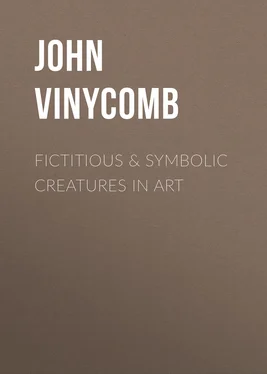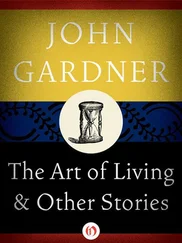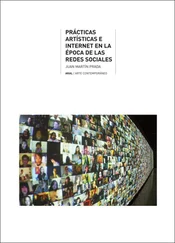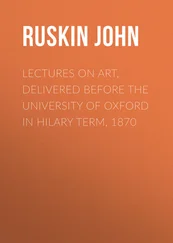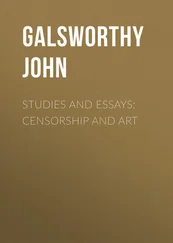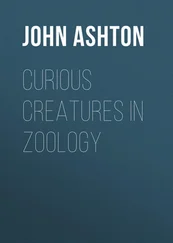John Vinycomb - Fictitious & Symbolic Creatures in Art
Здесь есть возможность читать онлайн «John Vinycomb - Fictitious & Symbolic Creatures in Art» — ознакомительный отрывок электронной книги совершенно бесплатно, а после прочтения отрывка купить полную версию. В некоторых случаях можно слушать аудио, скачать через торрент в формате fb2 и присутствует краткое содержание. Жанр: foreign_antique, foreign_home, visual_arts, на английском языке. Описание произведения, (предисловие) а так же отзывы посетителей доступны на портале библиотеки ЛибКат.
- Название:Fictitious & Symbolic Creatures in Art
- Автор:
- Жанр:
- Год:неизвестен
- ISBN:нет данных
- Рейтинг книги:3 / 5. Голосов: 1
-
Избранное:Добавить в избранное
- Отзывы:
-
Ваша оценка:
- 60
- 1
- 2
- 3
- 4
- 5
Fictitious & Symbolic Creatures in Art: краткое содержание, описание и аннотация
Предлагаем к чтению аннотацию, описание, краткое содержание или предисловие (зависит от того, что написал сам автор книги «Fictitious & Symbolic Creatures in Art»). Если вы не нашли необходимую информацию о книге — напишите в комментариях, мы постараемся отыскать её.
Fictitious & Symbolic Creatures in Art — читать онлайн ознакомительный отрывок
Ниже представлен текст книги, разбитый по страницам. Система сохранения места последней прочитанной страницы, позволяет с удобством читать онлайн бесплатно книгу «Fictitious & Symbolic Creatures in Art», без необходимости каждый раз заново искать на чём Вы остановились. Поставьте закладку, и сможете в любой момент перейти на страницу, на которой закончили чтение.
Интервал:
Закладка:
According to ancient Jewish belief, each person had his or her guardian angel, and a spirit could assume the aspect of some visible being:
“But she constantly affirmed that it was even so.
Then said they, ‘It is his angel .’”
“Brutus as you know was Cæsar’s Angel :
Judge, O ye God, how dearly Cæsar loved him.”
Spenser finely expresses the idea of the good and evil influences continually warring unseen about us, and his gratitude for the effective protection of the guardian spirits:
“How oft do they their silver bowers leave,
To come to succour us that succour want!
How oft do they with golden pinions cleave
The flitting skies, like flying pursuivant,
Against fowle fiends to ayde us militant!
They for us fight, they watch, and dewly ward,
And their bright squadrons round about us plant;
And all for love, and nothing for reward:
O why should heavenly God to men have such regard?”
Milton beautifully assumes the pure nature of saintly chastity attended by ministering spirits:
“A thousand liveried angels lackey her,
Driving far off each thing of sin and guilt,
And in clear dream and solemn vision,
Tell her of things that no gross ear can hear;
Till oft converse with heavenly habitants
Begins to cast a beam on the outward shape.”
And Scott, in figurative language, apostrophising woman in her higher and more spiritual sphere, says in “Marmion”:
“When pain and anguish wring the brow,
A ministering angel thou!”
Shakespeare expresses a prevailing idea that the pure in heart will become ministering angels in heaven; Laertes, at the grave of Ophelia, fiercely thunders forth:
“I tell thee, churlish priest,
A ministering angel shall my sister be
When thou liest howling.”
Mediæval Art Treatment of Angels
According to ecclesiastical legend and tradition there are nine degrees of angelic beings. St. Dionysius relates that there are three hierarchies of angels and three orders in each; and by wise allegories each had his special mission, and they were each depicted with certain insignia by which they were recognised in art representations, which vary somewhat in examples of different periods.
The nine choirs of angels are classed as follow, with the name of the chief of each, according to ancient legend:
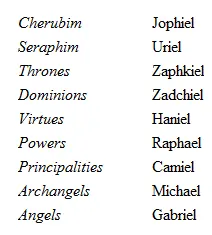
According to A. Welby Pugin’s “Glossary of Architectural Ornament and Costume,” and other authorities, we learn the mediæval conception of these beings.
The following emblems are borne by angels: Flaming Swords, denoting “the wrath of God”; Trumpets, “the voice of God”; Sceptres, “the power of God”; Thuribles, or censers, the incense being the prayers of saints; Instruments of Music, to denote their felicity.
The Apparels, or borders of their robes, are jewelled with Sapphire for “celestial contemplation”; Ruby, “divine love”; Crystal, “purity”; Emerald, “unfading youth.”
Archangels are the principal or chief angels, and are extraordinary ambassadors. Among these the name of Gabriel—the angel of the annunciation, the head of the entire celestial hierarchy—denotes “the power of God”; Michael, “who is like God”; Raphael, “the healing of God”; Uriel, “the fire of God.”
Angel is the name, not of an order of beings, but of an office, and means messenger: wherefore angels are represented young to show their continued strength, and winged to show their unweariedness; without sandals, for they do not belong to the earth; and girt, to show their readiness to go forth and execute the will of God. Their garments are either white, to denote their purity, or golden, to show their sanctity and glory, or they are of any of the symbolical colours used in Christian Art.
A writer in the Ecclesiastical Art Review , May 1878, I. Lewis André, architect, says that “we seldom find angels clad in any other ecclesiastical vestments than the Alb (or tunic of various colours), and the amice. The Amice is sometimes like a mere loose collar; at other times it has richly embroidered Apparels (or borders), and is exactly like the priestly vestment as worn in the Middle Ages. Instead of the amice we sometimes find a scarf or cloth tied in a knot around the neck, the ends falling down in front.
“In Anne of Brittany’s prayer-book is a beautiful figure of St. Michael. He has a rayed nimbus, a cross on a circlet round his head, a richly embroidered dalmatic (a long robe with sleeves partly open at the sides), and holds a sword in his left hand. The emblems of St. Michael are a crown, a sword, a shield charged with a cross of St. George, or a spear with the banner of the cross, or else with scales in his hand. Sometimes, as at South Leigh, Oxon., he is in complete armour.
“The archangels are often figured with a trumpet in the right hand, scarfs round neck and loins; six wings, sometimes four at the shoulders and two at the hips, the legs bare from the thighs. The four archangels are frequently represented in complete armour and with swords.
“The angels in the Benedictional of St. Ethelwold nearly resemble much later representations; they have wings and the nimbus or aureole, long hair and girded loins, whilst the feet are bare, as is generally the case at all periods of Gothic Art; but the characteristic drapery is loose and flowing as in the Saxon figures of saints; the wings are short and broad, the nimbus is generally rayed like the spokes of a wheel (a form seen in the work of Giotto, with whom it seems to have been a favourite). The alb or vesture has loose sleeves, and at times a mantle or cope envelops the figure; both sleeves and mantles have embroideries or apparels.”
“The modern taste,” says the same writer, “for giving angels pure white vesture does not appear to be derived from the Middle Ages, and certainly not from the best period when angels were clad in every brilliant colour, as a beautiful example at St. Michael’s, York, shows. Here an angel swinging a golden censer has a green tunic covered with a white cloak or mantle. The nimbus is bright blue, and the wings have the upper parts yellow, and are tipped with green. At Goodnestowe church, St. Michael has a deep crimson tunic, a white mantle edged with a rich gold border, green wings, and a light crimson nimbus,” and mention is here made of the white vesture of the angel at the Sepulchre, and that nowhere else does the Gospel mention any angel clad in white but in the narratives of Our Lord’s resurrection.
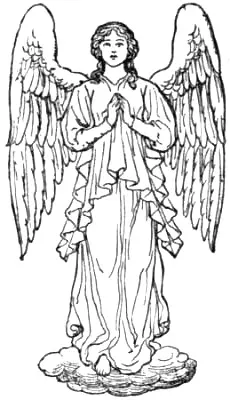
Angel with Cloud Symbol.
“Often the angels’ wings are feathered red and blue alternately, as on the pulpit at Cheddar, Somerset. Sometimes the wings have feathers like those of a peacock, on the Chapter House, Westminster; round the Wall Arcade, angels have their wings inscribed with a text on every feather. This corresponds with the French ‘hours’ of Anne of Brittany, where an angel (St. Gabriel) wears a mantle with a text running along the border.”
It was not uncommon to represent angels in carving and stained glass in the latter part of the fifteenth century as feathered all over like birds.
Читать дальшеИнтервал:
Закладка:
Похожие книги на «Fictitious & Symbolic Creatures in Art»
Представляем Вашему вниманию похожие книги на «Fictitious & Symbolic Creatures in Art» списком для выбора. Мы отобрали схожую по названию и смыслу литературу в надежде предоставить читателям больше вариантов отыскать новые, интересные, ещё непрочитанные произведения.
Обсуждение, отзывы о книге «Fictitious & Symbolic Creatures in Art» и просто собственные мнения читателей. Оставьте ваши комментарии, напишите, что Вы думаете о произведении, его смысле или главных героях. Укажите что конкретно понравилось, а что нет, и почему Вы так считаете.
